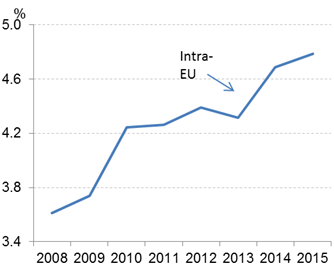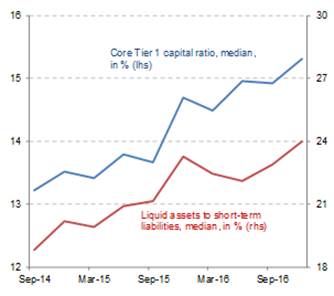European financial stability and integration

date: 24/05/2017
On 19 May, more than 400 stakeholders from the financial industry, consumer representatives, academics, as well as officials from the EU institutions and national authorities attended a high-level conference on "European Financial Integration and Stability", hosted jointly by the European Commission and the European Central Bank in Brussels.
Annual event
The main goal of this annual conference was to discuss the latest developments in the financial sector, the ongoing challenges of market integration and of financial stability, as well as the policy responses to these issues. In particular, the achievements and further completion of the Banking Union and the development of deeper capital markets were the two main topics discussed.
Valdis Dombrovskis, Vice-President responsible for Financial Stability, Financial Services and Capital Markets Union highlighted in his keynote speech the changes introduced by the European Union to the banking institutional and legal environment in the past and how banks have adjusted to these changes. "Since the crisis, we have come a long way," he said. "We have put in place a single rulebook for all financial actors in the European Union. In the euro area, the Banking Union is up and running, with the European Central Bank as the central prudential supervisor and a Single Resolution Mechanism to manage a resolution effectively should the need arise. The three European Supervisory Authorities have been ensuring more convergent supervisory practices and outcomes across the Union."
EFSIR report
At the conference, the Commission presented its "European Financial Stability and Integration Review (EFSIR)". This annual report reviews recent developments in financial markets and the financial sector and their impact on financial stability and integration. The European Central Bank also presented its report "Financial Integration in Europe".
The Commission's report serves as a tool to monitor financial, economic and policy developments and to analyse the underlying structural drivers. This year's edition focuses in particular on two specific issues. First, it reviews the various elements – both existing and proposed – of Banking Union and discusses the progress made so far towards its completion. Evidence shows that the measures already in place, such as increased capital requirements and the common frameworks for supervision and resolution, have reinforced financial stability considerably. Secondly, the report devotes a chapter to macro-prudential policies in the EU and provides valuable insight into how these policies complement other economic policy measures seeking to dampen financial cycles.
Considerable progress has been made in building a well-functioning Banking Union. The Single Rulebook created a common set of rules for EU banks. Among other things, these rules have ensured that banks now hold a sufficient amount of good quality capital and liquidity.
The Banking Union would also complement the process of capital market integration, which will receive a boost from the development of the Capital Markets Union. For this reason, the Commission will continue to work at full speed to complete the Banking Union, and also deepen and integrate European capital markets. The overall aim is to complement bank lending with other sources of funding and promote cross-border activity and investment.

Note: EU financial integration is measured by the sum of gross external assets and liabilities divided by GDP at current market prices, excluding reserves and financial derivatives.

